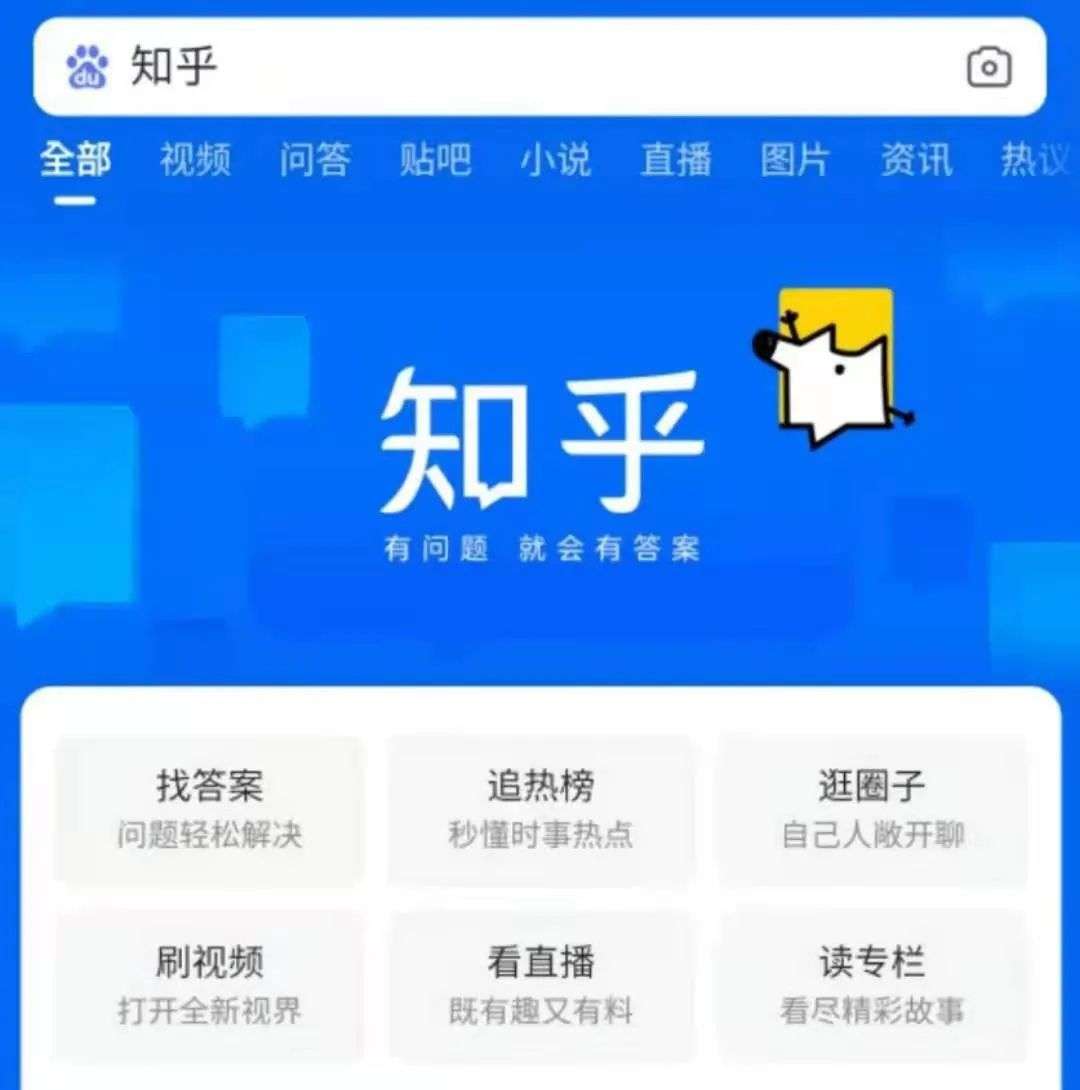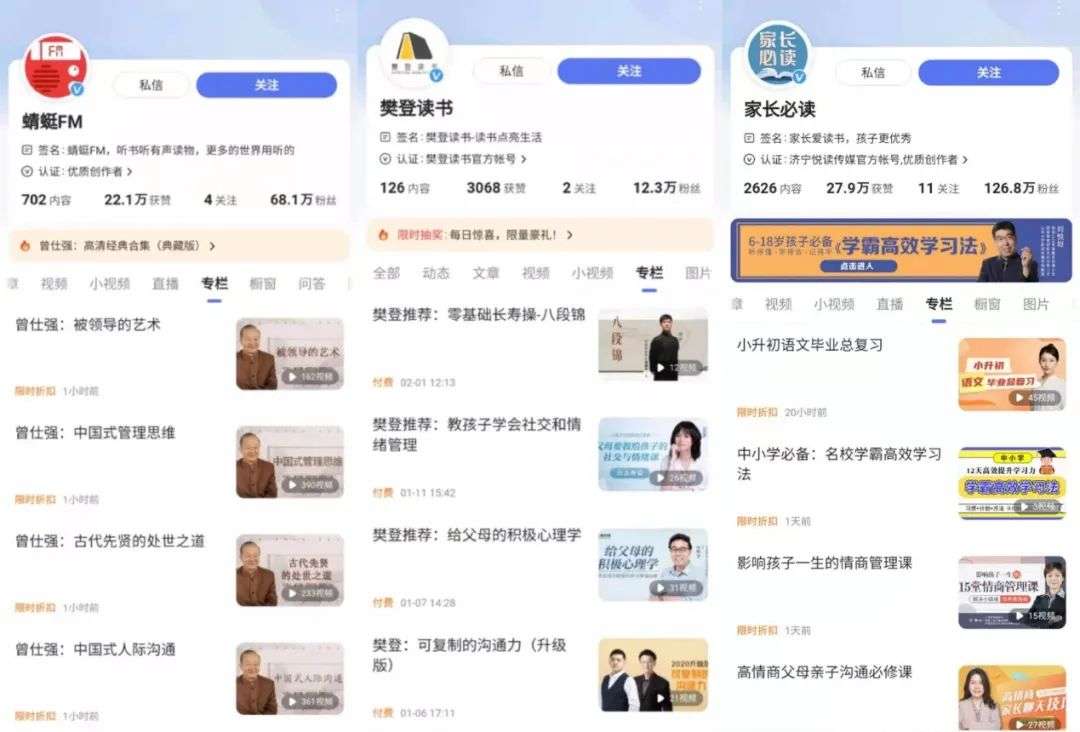How to deal with involution and anxiety? The answer for many people is to learn. So, we bought a lot of paid knowledge courses, but in the end we found that they were not so useful and we gave up. So, how do we want to tell the story of payment for knowledge?
Editor’s note: This article is from the micro-channel public number “New Retail Business Review” (ID: xinlingshou1001), Author: Wang Zi Xu.
“At the moment of involution and anxiety, the story of paying for knowledge has not been well told.”
How to deal with involution and anxiety?
Continuously learning to enrich yourself is probably the answer in many people’s minds. Recently, Zhihu, which was born in 2011, successfully went public in the United States and rekindled the discussion of payment for knowledge from the outside world.
In the early stages of development, Zhihu had a strong community atmosphere, and was labeled “elite” and “authoritative” by the outside world. At that time, many users liked to use the fragmented time to learn from Zhihu.
Subsequently, payment for knowledge began to rise, and Zhihu, who was positioned in the Q&A community, set about related explorations, and finally achieved some results after a long period of iteration.
At the 2021 New Knowledge Youth Conference previously held, Zhihu founder and CEO Zhou Yuan announced relevant data. Zhihu’s monthly active paying users have exceeded 2.5 million, forming a collection of audio and video courses, e-books, periodicals and magazines. A high-value paid content library of thesis library and salt selection column, with a total content of more than 3 million.
In the first round of the outbreak of the knowledge payment industry, a large number of players flooded into the industry, which also spawned a lot of chaos in the industry, which was questioned by users, and the industry was immediately poured cold water. In the meantime, Zhihu has launched some products, but the market response has been mediocre.
In fact, not only Zhihu, but the entire knowledge payment industry has not yet developed a mature business model, so the industry has fallen into a period of silence.
Even so, it still cannot stop the overall scale of the industry from expanding year by year. According to iiMedia Consulting’s data, the market size of China’s payment for knowledge industry has expanded rapidly since 2017. It reached 27.8 billion yuan in 2019 and is expected to grow to 67.5 billion yuan by 2021. With the new demands of, skills, and interests, the entire knowledge payment industry has undergone new changes.
From eruption to silence
The rise of payment for knowledge stems to a certain extent from people’s fear and anxiety about the information age.
Since 2011, Douding.com, Luo Ji Siwei and other companies have been experimenting in the field of knowledge payment. At the end of 2012,With the help of Youku platform, Luo Zhenyu and Shenyin teamed up to create a knowledge talk show “Luo Ji Mind”; at the same time, the WeChat official account of the same name also started operating. Luo Zhenyu will release a 60-second voice on the official account every day, by virtue of character creation And his unique perspective, let him capture a group of young fans.
Later, “Luo Ji Si Si” launched a series of innovative gameplays such as member “Rolly”, social marriage, overlord meal, head picking tea, C2B customization, etc., making people inside and outside the industry stunned. In December 2013, “Luo Ji Si Si”, in the title “The Most Unreasonable Member Recruitment in History”, easily raised 8 million yuan in one day.
This not only allows Luo Zhenyu, but also allows more people to see the potential market for payment for knowledge. 2015 is known as the “first year of payment for knowledge in China”; according to iiMedia Consulting’s data, the number of new knowledge payment related companies that year exceeded 700, reaching the highest value in the past ten years.
The influx of many players, knowledge payment has become a new trend, and also caused some chaos in the industry.
When the payment for knowledge was hot, Xiao Ning, who became interested in photography, paid for an introductory photography course, but the result did not meet expectations: “Although the person sharing is very powerful, his course is not logical. Whatever I said, after listening to it, I feel that it is not very helpful to me.”
There are not a few people like Xiao Ning who have high expectations of paying for knowledge, but the higher the expectations, the greater the disappointment.
On the one hand, online knowledge learning is completely different from offline design ideas and teaching methods. It is not easy to clarify a knowledge point or skill and method in a relatively short time, and it is extremely demanding for content creators. high.
However, when payment for knowledge suddenly became popular, there were too few high-quality content on each platform, and the creators’ abilities and knowledge were uneven, which directly affected the user experience. Many people felt that the money was spent. Did not learn useful knowledge.
On the other hand, some speculators with the mentality of “catch a fortune and leave” randomly pieced together courses, exaggerated the publicity and led to the wrong product, causing paying users to feel that they were “cut the leek.” There is a misunderstanding about the payment.
In addition, there were some paid content deliberately creating anxiety at the time, which caused many users to have a bad experience.
Under many problems, all platforms have fallen into a bottleneck period of sluggish repurchase rates, and the entire knowledge payment industry has gradually quieted down.
The rise of pan-knowledge payment
The raging new crown epidemic has made homes become the norm; a variety of online courses and entertainment content take advantage of the trend to fill the idle life.
According to Analysys analysis data, the outbreak of the epidemic in 2020 will promote the further development of the pan-knowledge payment industry. The market size of the industry has exceeded 23 billion, an increase of 38.70% year-on-year; the number of users exceeded 540 million, an increase of 22.25% year-on-year.
The most direct manifestation of data is knowing, Bilibili (Station B), Himalaya and other platforms continue to widen the boundaries of content, and knowledge-paid products represented by “pan-knowledge payment” have returned to people’s vision and ushered in a second outbreak.
Take Zhihu as an example. According to its prospectus, Zhihu’s paid membership income is 320 million yuan in 2020, accounting for 23.7%; membership business has risen from 88 million yuan in 2019 to 320 million yuan in 2020, an increase of 264% year-on-year, and the growth rate is relatively fast. . This is its second largest revenue after advertising. It is worth noting that the pay rate of Zhihu users in 2020 is only 3.4%. Although it has increased from 1.2% in 2019, it is clearly far from enough.
In an interview with New Retail Business Review, industry insider Xixi said that vertical platforms like Get App are more professional in certain knowledge fields, but relatively charge higher membership fees; comprehensive platforms are rich in content and Diversified, users get relatively low cost of content, and they can also get additional value-added services.
The manifestation on the user side is that more and more people are willing to pay for their interests.
Film and television enthusiast Xiaohong bought a set of film courses, and well-known film critics will analyze classic movies in the course. Xiaohong said: “Compared to success learning, I want to pay for my interest. I have more motivation to listen to these courses.”
Analysis analyst Liao Xuhua told New Retail Business Review that users’ needs are diverse. Taking station B as an example, different users like to watch different content, and even the same user will like different types of content at the same time. Therefore, compared with vertical platforms, comprehensive platforms can better meet the diverse needs of users.
The future of payment for knowledge
“Find Du Niang if you have a problem”-When people want to understand a knowledge point and answer a difficult problem, their first reaction may be to search and ask questions online. In other words, in the field of knowledge payment, search and question answering are two learning methods with natural advantages.
Zhihu started as a Q&A community. As of the end of 2020, Zhihu’s content creators have reached 43.1 million and contributed 315.3 million questions and answers. Zhihu is already the largest Q&A community in China. By the fourth quarter of 2020, the average MAU was 75.7 million, and the monthly interaction within the community during the same period averaged 676 million.
As for Baidu, which has an absolute market position in the search field, the layout of the payment for knowledge business began in 2019.
Dragonfly fm, Zhihu, Fan DengReading and other institutions have successively entered Baidu, with the help of Baidu’s paid column, becoming the representative account of Baidu’s paid business; companies in various fields such as parent must-read, 1-post E-learning, and Southern Health have also begun to export content on Baidu.
Xixi believes that at present, Baidu has not made a strategic layout for professional content. Most users don’t expect to get paid professional knowledge from Baidu; although Baidu Library needs to pay, the content itself is not unique, and it is not just necessary for users.
Therefore, although it controls the search traffic entrance, due to the lack of a unified layout, Baidu’s advantage in the field of knowledge payment is not obvious.
Under the background of the rise of pan-knowledge payment, compared with comprehensive platforms with functions such as community and search, the growth of vertical knowledge payment platforms is slightly slower. One of the most important reasons is that the learning attributes of vertical platforms are relatively strong, and neither user stickiness nor activity is comparable to comprehensive platforms.
However, both comprehensive and vertical platforms are facing some industry common problems.
According to Liao Xuhua’s point of view, the current industry is facing challenges from both content and users.
In terms of content, the overall supply is not enough, and the types are not rich enough. Take the form of content presentation as an example. In recent years, short videos have emerged, and many content creators have focused on videos.
But in fact, from a learning point of view, audio learning is applicable to more diverse scenarios (such as commuting to get off work, before going to bed, etc.), and the production threshold is lower. How to attract more creators to join audio creation? It requires careful consideration by the platform side.
In terms of users, there is still much room for improvement in the penetration of users in the sinking market and the cultivation of payment habits for young users. To solve this problem, we still have to work hard on the content.
For example, the output of two-dimensional and sci-fi works that are currently of interest to young users is far lower than that of history and health preservation. In other words, only by providing valuable and rich content, can user growth and payment increase be promoted.
From this point of view, the focus has finally returned to the content. Xixi told New Retail Business Review that the current knowledge payment industry has not yet established a regulatory mechanism, which has caused some chaos in the industry. “For example, the content shared by the creator is inaccurate, or there are extreme opinions.”
The future of the knowledge payment platform that can be envisaged may be like this: On the one hand, the content will become richer and more diverse,Meet the different needs of different user groups; at the same time, the knowledge content of each field will develop in a more vertical and professional direction.
In short, it seems that the paid knowledge industry still has a long way to go…
* At the request of the interviewee, Xiaoning, Xiaohong, and Xixi are all pseudonyms in this article.
Reference material:
1. “Report on China’s Paid Knowledge Industry in 2020”, iMedia.com
2. “Behind the breakup of Luo Zhenyu and Shenyin: How do we tell the big story from the media?” “, NetEase Technology Report


